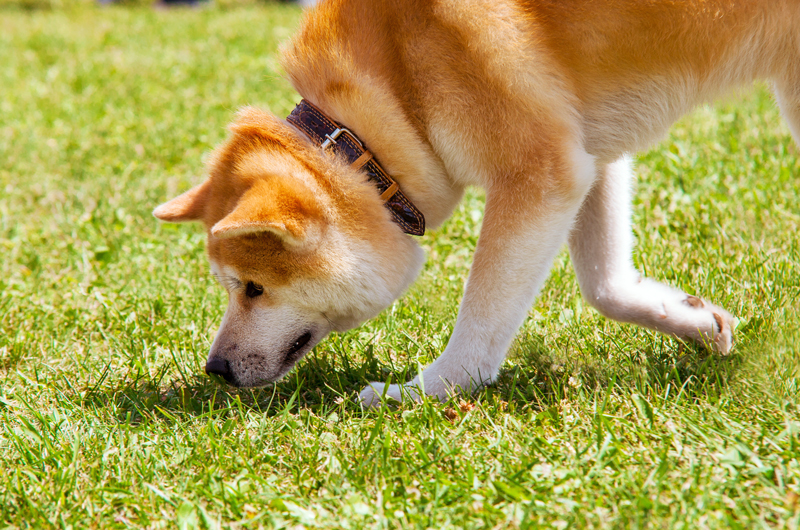30 Oct 2018
Kathryn Cowley discusses various lifestyle changes that can be adopted by owners of dogs with OA, most of which are low cost or free through the use of a home assessment tool.

Image © alexei_tm / Adobe Stock
As vets, we find ourselves prescribing analgesics multiple times a day, and often we advise any soft tissue or orthopaedic injury, especially in acute cases, be rested to allow more rapid healing.
How often though do we consider what actually happens to this patient after they leave the practice? Likely, for most of us, not often enough.
While our clients are spending money on pain medications they may well be undoing all the good work these can do by allowing their dog to repeatedly injure themselves at home – this makes no sense and we need to ensure, as much as possible, this isn’t happening to the patients in our care.
For our human medical counterparts, the concept of occupational therapy is commonplace – the process of adapting the environment or the task carried out in that environment to make it easier for the patient.
It has been shown, in people with rheumatoid arthritis, applying the occupational therapy principles of joint protection improves function above and beyond using analgesics alone. It makes logical sense that, in our canine patients with arthritis that have similar pathology, using similar principles would be of great benefit.
Remember that a dog will simply adapt its behaviour to cope with chronic pain, but this should not be allowed to be the case; we wouldn’t expect an elderly relative to just “get on with it” so why should we expect that of our canine companions?
Joint protection principles aim to reduce improper use of diseased joints that may lead to more rapid progression of OA. It is important owners respect the patient’s pain levels and get a good balance between rest and activity tailored to the individual’s abilities and needs.
For dogs, this means getting the balance between short periods of low impact exercise, such as lead walking or swimming, and regular periods of uninterrupted, good quality rest.
Rest periods can also be built into walks, with dogs encouraged to walk shorter distances including breaks to allow for time spent sniffing around in new environments, rather than walking miles at a time.

While many dogs enjoy ball chasing, this type of repetitive activity will apply huge load and twisting force through the joints, and should be discouraged. This idea will likely be better received by an owner, who will rightly be concerned about withdrawing an activity their dog enjoys, if they are presented with an alternative activity the dog will come to love, such as scent-work games.
Maintaining a good body condition score (BCS) is also vital to the principles of joint protection. Many owners will look to their dogs breed average weight as a target and this can be very misleading. Ensure you explain to them the idea of BCS, and consider teaching them how to check it at home.
Weight is a contentious issue for a lot of owners but it needs to be made clear they are the ones in control of their dog’s weight and, therefore, of the conditions it adversely affects. Just 5% weight loss in an obese dog has been shown to improve mobility and can be achieved quickly with a little dedication, allowing owners to see the benefits of their hard work rapidly, if encouraged to do so.
For many of us, suggesting these lifestyle changes will seem obvious and may be something you and your practice already do as standard. In contrast, environmental changes are much less frequently considered. Simple things, such as the provision of a good quality orthopaedic bed, can make a huge difference to a dog’s comfort levels.
It is important to reduce the frequency of slips, trips and falls in the home, all of which are known to produce micro-traumas; small, usually unnoticed injuries that, over time with repetition, cause damage to bones and soft tissues – and encourage tension and pain in postural muscles.
Hazards in the home include low friction surfaces, such as laminate or tiled floor, access to stairs and trip hazards, such as rug edges or door frames.
To help identify these problem areas, Canine Arthritis Management has produced a home assessment tool, which is essentially a checklist for owners to use to guide them in assessing the suitability of their dog’s environment.
Many of the suggested changes from using the tool are low cost or free, so should be easy for most owners to undertake. It’s easy for owners to feel they are overdoing it or babying their dog by changing their environment and routine.
As vets, it is our role to make sure they are aware this is not the case, that these changes should be made and they will receive our support to help their dog in whatever way they can.
Discussing the home environment, alongside completion of a pain score assessment as discussed in previous articles, can be a great way of engaging owners in prescription check appointments that can otherwise seem like nothing more than a money-making exercise or a legal loophole they must jump through.
Not only this, but simple changes can make a big difference to a dog’s pain levels, and quality and quantity of life. OA is one of the most common causes of elective euthanasia of dogs in the UK – if we do more to protect these patients from pain and injury then it doesn’t have to be.